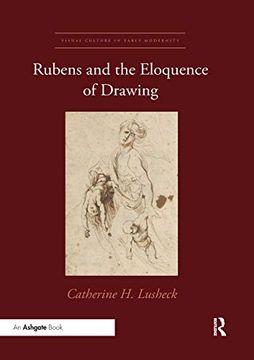Compartir
Rubens and the Eloquence of Drawing (Visual Culture in Early Modernity) (en Inglés)
Catherine H. Lusheck (Autor)
·
Routledge
· Tapa Blanda
Rubens and the Eloquence of Drawing (Visual Culture in Early Modernity) (en Inglés) - Catherine H. Lusheck
$ 942.70
$ 1,714.00
Ahorras: $ 771.30
Elige la lista en la que quieres agregar tu producto o crea una nueva lista
✓ Producto agregado correctamente a la lista de deseos.
Ir a Mis Listas
Origen: Estados Unidos
(Costos de importación incluídos en el precio)
Se enviará desde nuestra bodega entre el
Viernes 12 de Julio y el
Lunes 29 de Julio.
Lo recibirás en cualquier lugar de México entre 1 y 3 días hábiles luego del envío.
Reseña del libro "Rubens and the Eloquence of Drawing (Visual Culture in Early Modernity) (en Inglés)"
Rubens and the Eloquence of Drawing re-examines the early graphic practice of the preeminent northern Baroque painter Peter Paul Rubens (Flemish, 1577–1640) in light of early modern traditions of eloquence, particularly as promoted in the late sixteenth- and early seventeenth-century Flemish, Neostoic circles of philologist, Justus Lipsius (1547–1606). Focusing on the roles that rhetorical and pedagogical considerations played in the artist’s approach to disegno during and following his formative Roman period (1600–08), this volume highlights Rubens’s high ambitions for the intimate medium of drawing as a primary site for generating meaningful and original ideas for his larger artistic enterprise. As in the Lipsian realm of writing personal letters – the humanist activity then described as a cognate activity to the practice of drawing – a Senecan approach to eclecticism, a commitment to emulation, and an Aristotelian concern for joining form to content all played important roles. Two chapter-long studies of individual drawings serve to demonstrate the relevance of these interdisciplinary rhetorical concerns to Rubens’s early practice of drawing. Focusing on Rubens’s Medea Fleeing with Her Dead Children (Los Angeles, Getty Museum), and Kneeling Man (Rotterdam, Museum Boijmans Van Beuningen), these close-looking case studies demonstrate Rubens’s commitments to creating new models of eloquent drawing and to highlighting his own status as an inimitable maker. Demonstrating the force and quality of Rubens’s intellect in the medium then most associated with the closest ideas of the artist, such designs were arguably created as more robust pedagogical and preparatory models that could help strengthen art itself for a new and often troubled age.
- 0% (0)
- 0% (0)
- 0% (0)
- 0% (0)
- 0% (0)
Todos los libros de nuestro catálogo son Originales.
El libro está escrito en Inglés.
La encuadernación de esta edición es Tapa Blanda.
✓ Producto agregado correctamente al carro, Ir a Pagar.

